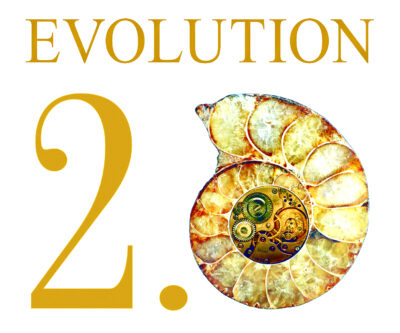 Public schools are required to teach evolution as a valid scientific theory. Interestingly enough, not a single science organization in the twenty-first century has successfully developed a scientific consensus on evolution.
Public schools are required to teach evolution as a valid scientific theory. Interestingly enough, not a single science organization in the twenty-first century has successfully developed a scientific consensus on evolution.
Consensus development is a privileged responsibility of science organizations. A scientific consensus, while not synonymous with absolute truth, gives non-scientists guidance to gain scientific understanding.
Eighteen science organizations currently have a consensus statement on climate change, spanning from the American Association for the Advancement of Science (AAAS) to the American Medical Association (AMA). A scientific consensus on climate change, from leading science organizations, while silent on a scientific consensus on evolution, is rather telling.
Since the publication of The Origin of Species by Charles Darwin in 1859, scientific discoveries have challenged Darwin’s theory of natural selection. Therefore, if evolution is taught as a scientifically valid theory, a modern scientific consensus on evolution is essential.
The lack of a modern consensus, however, is not due to negligence. In this article, we will journey through the critical changes in Darwin’s theory, along with the efforts of evolution scientists to develop a modernized consensus.

Currently, the Royal Society of London is the only science organization with a current initiative to develop a modernized consensus. Called Evolution 2.0, in 2017 (logo pictured above), the Society launched the project, offering a $10 million prize to solve the theory’s core issue.
Twentieth Century Molecular Biology
By the beginning of the twentieth century, Darwin’s theory faced extinction. Scientists, however, grew increasingly intrigued by the theory of inheritance developed by Gregor Mendel (1822-1884) (pictured left). At the time, two of Darwin’s seemingly impossible dilemmas, the origin of genetic variations and inheritance, were solved by Mendel’s theory.
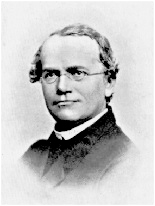 Mendel’s theory, now known as Mendelian genetics, was not compatible with Darwin’s theory of pangenesis and blending inheritance. The modernization of Darwin’s theory was essential.
Mendel’s theory, now known as Mendelian genetics, was not compatible with Darwin’s theory of pangenesis and blending inheritance. The modernization of Darwin’s theory was essential.
By the mid-twentieth century, “neo-Darwinism,” also known as the “Modern Synthesis” theory, replaced Darwinism. The books Genetics and the Origin of Species by Theodosius Dobzhansky (1937), Evolution: The Modern Synthesis (1937) by Julian Huxley, and Systematics and the Origin of Species (1942) by Ernst Mayr formulated the foundation for the new theory.
The emerging “one gene, one protein” hypothesis became the “central dogma” of a molecular-driven theory of evolution. According to Dobzhansky –
“Mutations and chromosomal changes … constantly and unremittingly supply the raw materials for evolution.”
Dobzhansky’s statement emerged as an unofficial unifying consensus for the theory of evolution. Inscribed in the floor of Jordan Hall of Science at the University of Notre Dame in a mosaic medallion is one of his most 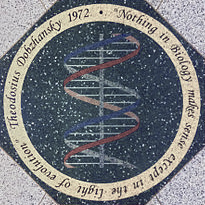 notable statements (pictured right) –
notable statements (pictured right) –
“Nothing in biology makes sense except in the light of evolution.”
Developing a cohesive scientific consensus on evolution seemed within reach at the time. By the late twentieth century, however, advances in biomolecular technologies allowed scientists to test the validity of this emerging consensus.
Unexpectedly, molecular biologists increasingly discovered disparities with the “one gene, one protein” theory of evolution. Scientists found that laboratory-induced genetic mutations produced “hopeful monsters,” not evolution.
Twentieth Century Paleontology
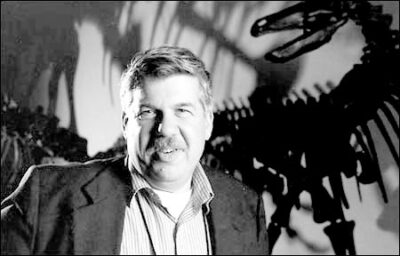 Fossils by the treasure trove were unearthed during the twentieth century. Paleontologists’ anticipation of discovering Darwin’s “innumerable” transitional links, however, increasingly faded as the gap between the theory and the fossil record reached a breaking point.
Fossils by the treasure trove were unearthed during the twentieth century. Paleontologists’ anticipation of discovering Darwin’s “innumerable” transitional links, however, increasingly faded as the gap between the theory and the fossil record reached a breaking point.
In 1972, paleontologists Stephen J Gould (pictured left) of Columbia University, and Niles Eldridge of the American Museum of Natural History, proposed a revolutionary theory called punctuated equilibrium. While Darwin argued that evolution develops slowly, Gould and Eldridge proposed evolution advances through “fits and starts.”
Punctuated equilibrium contradicts Darwin’s theory. Rather than evolution advancing uniformly through “slight, successive changes” over eons of time, as Darwin argued, Gould and Eldridge argued that evolution advanced quickly through massive, sudden changes. In his book Reinventing Darwin, Eldridge cut to the chase –
“No wonder paleontologists shied away from evolution for so long. It never seemed to happen.”
The complexity of Darwin’s Dilemma nearly exceeds the edge of science, even undermining de facto neo-Darwinism. Not surprisingly, during the entirety of the twentieth century, no scientific organization had published a scientific consensus on evolution.
Twenty-First-Century Consensus Developments
 By the late twentieth century, the focus of evolution research turned from the fossil record to molecular biology. This new focus, using advanced biotechnologies, centered on exploring the evidence supporting a molecular-driven theory of evolution.
By the late twentieth century, the focus of evolution research turned from the fossil record to molecular biology. This new focus, using advanced biotechnologies, centered on exploring the evidence supporting a molecular-driven theory of evolution.
As the genomic revolution continued to emerge, however, earlier findings challenging Modern Synthesis theory seemed to gain increasing validation. To the point, as Massimo Pigliucci (pictured right), of City College of New York, explains –
“Molecular processes clearly demolish the alleged central dogma.”
 To address the increasing disparity between the theory of evolution and scientific evidence, Pigliucci and Gerd B Műller (pictured left), of the University of Vienna, invited leading evolution scientists to develop a new consensus on evolution during the summer of 2009.
To address the increasing disparity between the theory of evolution and scientific evidence, Pigliucci and Gerd B Műller (pictured left), of the University of Vienna, invited leading evolution scientists to develop a new consensus on evolution during the summer of 2009.
Preceding the November celebrations of the 150th anniversary of The Origin of Species, a July meeting with 16 invited scientists convened at the Konrad Lorenz Institute in Altenberg, Austria. The closed meeting was nicknamed “Altenberg-16” by New Zealand journalist Suzan Mazur.
For this first conference of internationally-recognized evolution scientists in the twenty-first century, Pigliucci and Műller summarized the challenge –
“Although it is still regarded as the standard theoretical paradigm of evolutionary biology, for several years now dissenters from diverse fields of biology have been questioning aspects of the Modern Synthesis, and pivotal novel concepts have been elaborated that extend beyond its original scope.”
Anticipating a “Woodstock of evolution,” the conference goals centered on developing a new consensus on evolution, to be known as the “Extended Evolutionary Synthesis (EES).” Unlike the flower-powered “Woodstock” music scene, however, the media and the public were barred.
Evolution, the Extended Synthesis Consensus
While not achieving a new consensus on evolution during this “Woodstock” conference, the sixteen attendees did agree to send their recommendations for publication. In the following spring of 2010, MIT Press published the attendee’s essays in the book “Evolution, the Extended Synthesis.”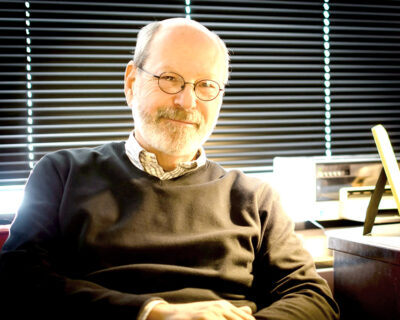
Elliot Sober (pictured right), professor of philosophy, University of Wisconsin-Madison, one of the first to comment on MIT’s new book, offered a sleight of hand assessment –
“The essays in this volume provide ample food for thought, and from all the major food groups!”
As a significant financial supporter of the evolution industry, Pigliucci’s EES initiative eventually gained the financial support of the John Templeton Foundation in 2016. As WIKIPEDIA explains on their “Extended Evolutionary Synthesis “page –
“The extended evolutionary synthesis is currently being tested by a group of scientists from eight institutions in Britain, Sweden, and the United States. The £7.7 million project is supported by a £5.7 million grant from the John Templeton Foundation.”
The EES initiative to unify “competing ideas” within the evolution industry, however, has yet to be successful. According to WIKIPEDIA –
“Biologists disagree on the need for an extended synthesis. Opponents contend that the modern synthesis is able to fully account for the newer observations, whereas others criticize that the Extended synthesis is not radical enough.”
Since the start of the twenty-first century, only two other organizations have convened scientists to address the challenges facing the theory of evolution: the World Summit on Evolution and the Royal Society.
World Summit
The first World Summit on Evolution was convened in 2005 at the Galapagos Islands and was hosted by Universidad San Francisco de Quito (USFQ), an Ecuadorian private liberal arts university. The university hosted two more events – one in 2009 and another in 2013.
“Through a series of presentations and discussions, the participants [could] ask the big questions.” Unlike Altenberg-16, the objectives of the summit did not include developing a new consensus on evolution.
Since 2013, no more meetings have been planned. A telling sign?
The Royal Society
 In November 2016, using a different approach, the original science organization in western civilization, The Royal Society, hosted discussions open to the media and public to address scientific challenges facing the theory of evolution. The Society’s call to action stated –
In November 2016, using a different approach, the original science organization in western civilization, The Royal Society, hosted discussions open to the media and public to address scientific challenges facing the theory of evolution. The Society’s call to action stated –
“Developments in evolutionary biology and adjacent fields have produced calls for revision of the standard theory of evolution, although the issues involved remain hotly contested.”
Given the lack of new evidence, no new consensus emerged. The media scarcely reported the meeting. Huffington Post journalist, Suzan Mazur (pictured left) complained –
“Just what was the point of attracting a distinguished international gathering if the speakers had little new science to present? Why waste everyone’s time and money?”
Mazur asked Eugene Koonin (pictured right), head of the Evolutionary Genomics Group, National Center for Biotechnology Information, National Institute of Health –
“Why is it so difficult to pull together the most compelling ideas in evolutionary biology and come up with an approximate understanding of how it all works?”
Koonin answered –
“The public is already extremely skeptical about the value and the scientific nature of evolutionary biology… The genomic revolution… effectively overturned the central metaphor of evolutionary biology, the Tree of Life.”
 Science writer Carl Zimmer (pictured left) described the dynamics between rival cliques in his article in The Atlantic titled “The Biologists Who Want to Overhaul Evolution, A half-century’s worth of scientific discoveries since the last major update to evolutionary theory has some researchers pushing for a paradigm shift” –
Science writer Carl Zimmer (pictured left) described the dynamics between rival cliques in his article in The Atlantic titled “The Biologists Who Want to Overhaul Evolution, A half-century’s worth of scientific discoveries since the last major update to evolutionary theory has some researchers pushing for a paradigm shift” –
“Both sides offered their arguments and critiques in a civil way, but sometimes you could sense the tension in the room – the punctuations of tsk-tsks, eye-rolling, and partisan bursts of applause. But no fisticuffs. At least not yet.”
Melinda Zeder, an archaeologist at the Smithsonian Institution, during one of the talks commented to Zimmer –
“It felt like an infomercial for the Extended Evolutionary Synthesis.”
Money may have played a role. Two months earlier, in September, a consortium of scientists in Europe and the United States received $11 million in funding (including $8 million from the John Templeton Foundation) to run 22 studies on the Extended Evolutionary Synthesis.
Jerry Coyne, of the University of Chicago and author of the book “Why Evolution is True,” who was in attendance, in a surprisingly candid moment, offered insight into the evolution industry –
“Maybe sometime a New Paradigm will come around, but this isn’t it. The noise we heard from London, outside of a few papers by people like Futuyma, is the noise of Templeton’s prize horses jockeying for money and fame.”
The official motto of The Royal Society in Latin is Nullius in Verba; meaning “take nobody’s word for it.” Founded in 1660, the society was granted a royal charter by King Charles II as “The Royal Society”. It is the oldest national scientific institution in the world.
Evolution 2.0 Consensus Initiative
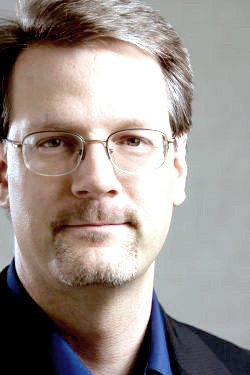 To break the consensus deadlock, the Royal Society, in 2017, embarked on a different approach to evolution by focusing on the origin of life named Evolution 2.0. The Society, in collaboration with entrepreneur Perry Marshall, is offering a $10 million prize for the winner to answer the most fundamental question – what is the origin of the first cell’s information. As Clive Cookson, Financial Times science editor, explains –
To break the consensus deadlock, the Royal Society, in 2017, embarked on a different approach to evolution by focusing on the origin of life named Evolution 2.0. The Society, in collaboration with entrepreneur Perry Marshall, is offering a $10 million prize for the winner to answer the most fundamental question – what is the origin of the first cell’s information. As Clive Cookson, Financial Times science editor, explains –
“Evolution 2.0 is a sign of a shifting emphasis in biology from regarding life primarily as a chemical system, to looking at the flow of information.”
The Society’s Evolution 2.0 project is a tacit acknowledgment of the limits of life sciences to develop a consensus on a cohesive theory of evolution. The three judges are British biologist Denis Noble, of the University of Oxford and the Royal Society, American geneticist George Church, Harvard University and Massachusetts Institute of Technology (MIT), and British-born Canadian philosopher of science Michael Ruse, Florida State University.
Noble explained to the Financial Times the reason for the change in his approach –
“Evolution 2.0 is a remarkably meticulous dissection of the experimental evidence on evolution. Perry Marshall and I have entered this debate from entirely different fields. He starts from information theory and practice, I started from research on the heart’s pacemaker, but we have come to almost identical conclusions.”
Now more than three years later, the prize has yet to be awarded.
Without a consensus, evolution teaching standards are a matter of opinion, not science. Campaigns to eliminate the compulsive teaching of evolution as a scientific fact in public education must continue.
Evolution must only be taught as a philosophy, not as a valid scientific theory, alongside the Genesis account – the only other widely accepted explanation.
Genesis
In the wake of the genomic revolution, the theory of evolution remains a minefield of competing ideas. A scientific consensus on evolution has yet to be developed by any twenty-first-century science organization. As Italian geneticist Giuseppe Sermonti (pictured right) explains –
“Science has taken on the great wager… and lost.”
 Scientific evidence, however, is compatible with the Genesis account. As Carolus Linnaeus (pictured left), the Swedish botanist who formalized the modern system of naming organisms, explains during the Scientific Revolution –
Scientific evidence, however, is compatible with the Genesis account. As Carolus Linnaeus (pictured left), the Swedish botanist who formalized the modern system of naming organisms, explains during the Scientific Revolution –
“I saw the infinite, all-knowing, and all-powerful God from behind.… I followed His footsteps over nature’s fields and saw everywhere an eternal wisdom and power, an inscrutable perfection.”
Refer to the Glossary for the definition of terms and to Understanding Evolution to gain insights into understanding evolution.

